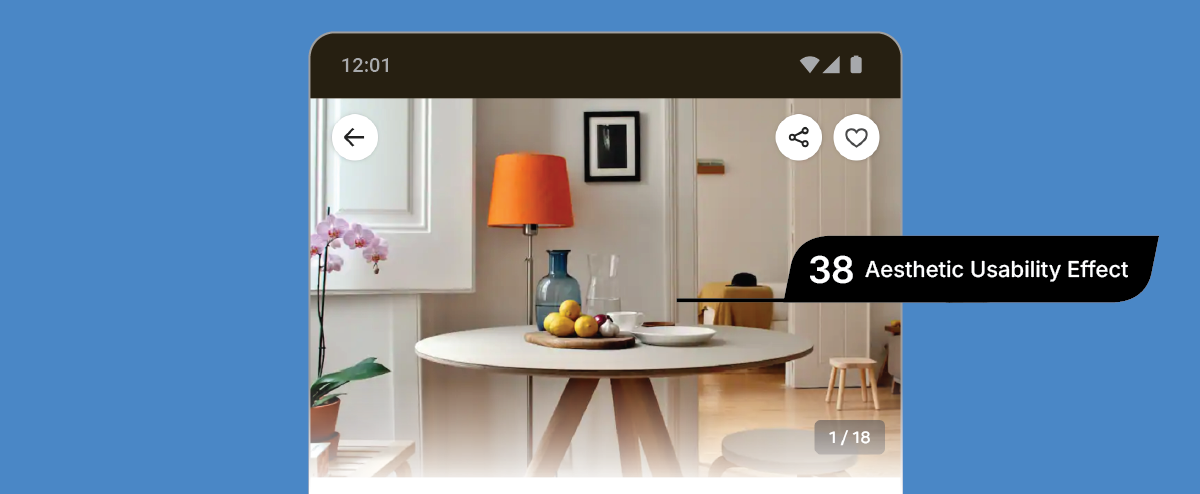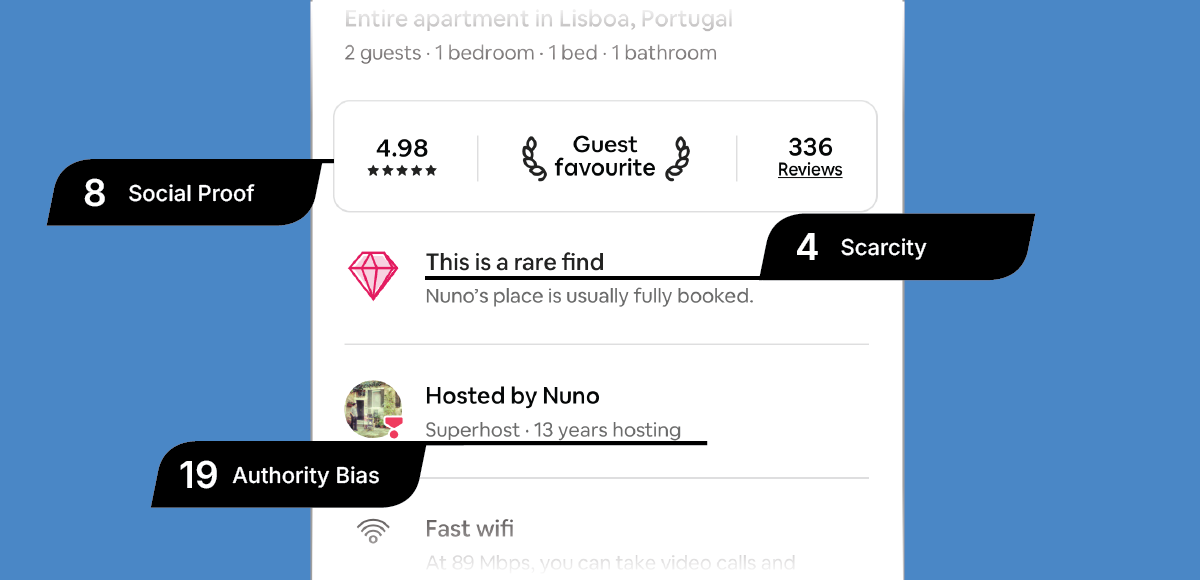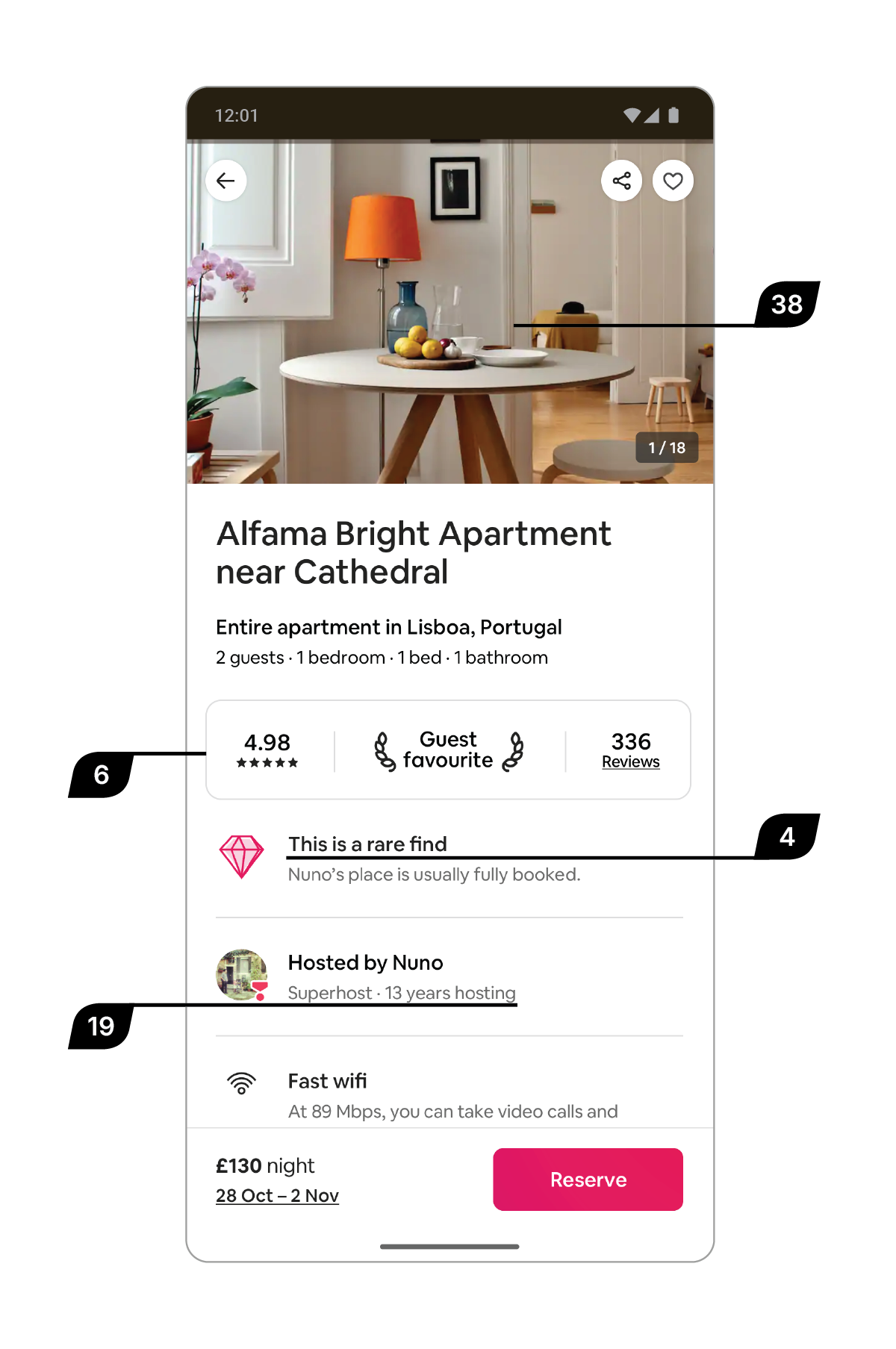Aesthetic Usability Effect
If it looks good, we believe it works better.
Social Proof
When others approve, we follow suit.
Scarcity
When things are rare, we want them more.
Authority Bias
We follow experts because they know best—or so we think.

38/ Aesthetic Usability Effect
Where?: The high-quality, well-lit images of the apartment at the top of the listing.
What’s Happening?: The appealing visual presentation of the apartment through these images.
Why Used?: Aesthetic designs are often perceived as more usable and valuable. Good quality and attractive images can enhance the user's perception of the apartment, making it more desirable and potentially increasing the likelihood of a booking.

6/ Social Proof
Where?: Displayed by the rating of 4.98 stars and 336 reviews.
What’s Happening?: The high rating and large number of reviews serve as social proof, showing that previous guests were satisfied with their stay.
Why Used?: Social proof reassures potential guests that they are likely to have a good experience, as others have. It leverages the wisdom of the crowd to build trust and credibility.
4/ Scarcity
Where?: Noted under the listing title as "This is a rare find. Nuno’s place is usually fully booked."
What’s Happening?: The message uses the scarcity principle by highlighting the limited availability of the apartment, suggesting it is usually fully booked.
Why Used?: Scarcity increases the perceived value of the apartment. The message encourages potential guests to book quickly to avoid missing out. This urgency can lead to faster decision-making and increase the likelihood of a reservation.
19/ Authority Bias
Where?: Mentioned where it states the details, "Superhost · 13 years hosting".
What’s Happening?: By labelling Nuno as a "Superhost" and noting their extensive experience, the listing emphasizes their authority and reliability as a host.
Why Used?: Highlighting the host's credentials and experience instills confidence in potential guests that they will receive excellent service. Authority is a powerful persuader, especially in settings where trust is crucial.

